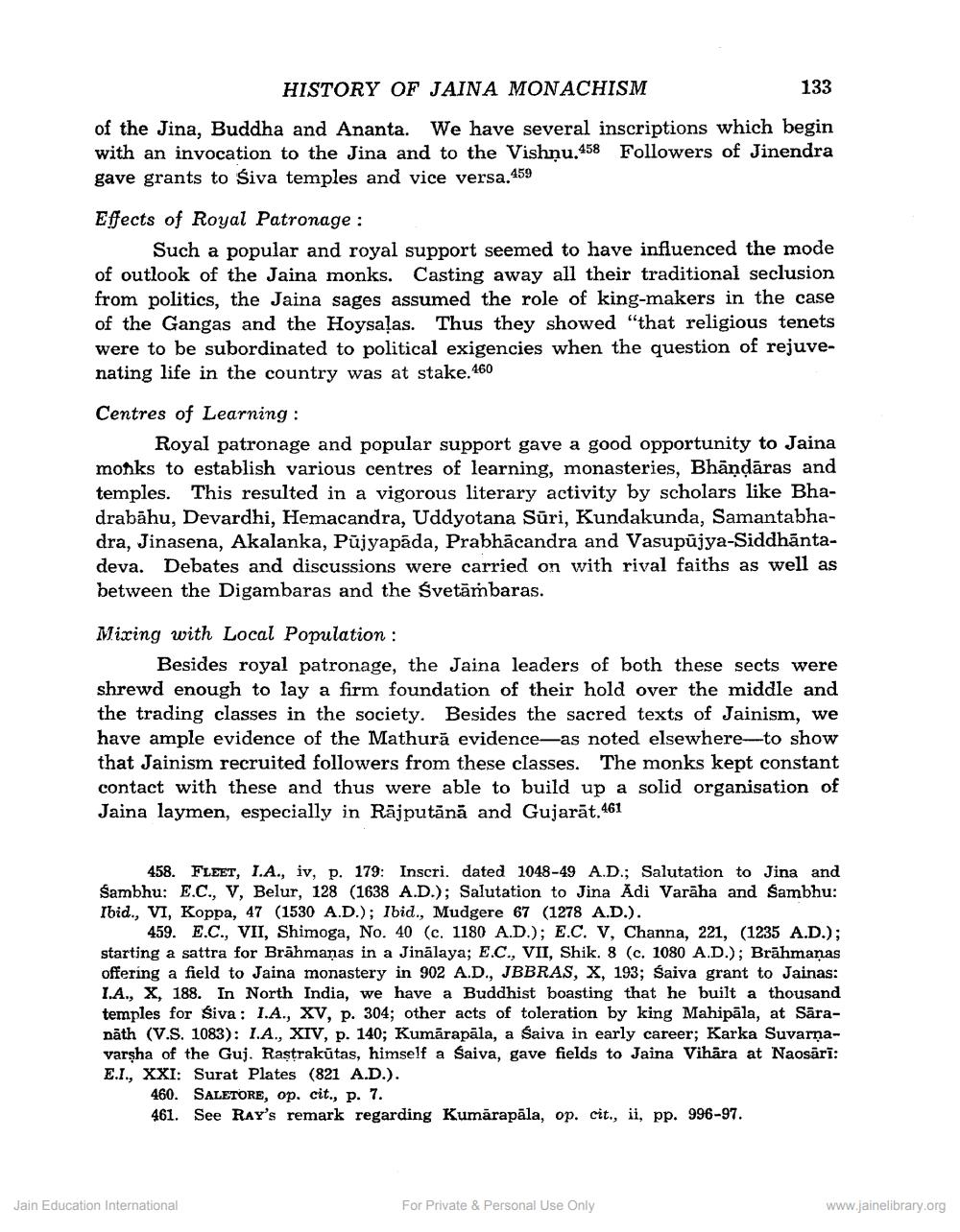________________
HISTORY OF JAINA MONACHISM
of the Jina, Buddha and Ananta. We have several inscriptions which begin with an invocation to the Jina and to the Vishnu.458 Followers of Jinendra gave grants to Śiva temples and vice versa.459
133
Effects of Royal Patronage:
Such a popular and royal support seemed to have influenced the mode of outlook of the Jaina monks. Casting away all their traditional seclusion from politics, the Jaina sages assumed the role of king-makers in the case of the Gangas and the Hoysalas. Thus they showed "that religious tenets were to be subordinated to political exigencies when the question of rejuvenating life in the country was at stake.460
Centres of Learning:
Royal patronage and popular support gave a good opportunity to Jaina monks to establish various centres of learning, monasteries, Bhāṇḍāras and temples. This resulted in a vigorous literary activity by scholars like Bhadrabahu, Devardhi, Hemacandra, Uddyotana Sūri, Kundakunda, Samantabhadra, Jinasena, Akalanka, Pujyapada, Prabhäcandra and Vasupujya-Siddhantadeva. Debates and discussions were carried on with rival faiths as well as between the Digambaras and the Svetämbaras.
Mixing with Local Population:
Besides royal patronage, the Jaina leaders of both these sects were shrewd enough to lay a firm foundation of their hold over the middle and the trading classes in the society. Besides the sacred texts of Jainism, we have ample evidence of the Mathură evidence-as noted elsewhere-to show that Jainism recruited followers from these classes. The monks kept constant contact with these and thus were able to build up a solid organisation of Jaina laymen, especially in Rajputānā and Gujarat.461
458. FLEET, I.A., iv, p. 179: Inscri. dated 1048-49 A.D.; Salutation to Jina and Sambhu: E.C., V, Belur, 128 (1638 A.D.); Salutation to Jina Adi Varaha and Sambhu: Ibid., VI, Koppa, 47 (1530 A.D.); Ibid., Mudgere 67 (1278 A.D.).
459. E.C., VII, Shimoga, No. 40 (c. 1180 A.D.); E.C. V, Channa, 221, (1235 A.D.); starting a sattra for Brāhmaṇas in a Jinālaya; E.C., VII, Shik. 8 (c. 1080 A.D.); Brāhmaṇas offering a field to Jaina monastery in 902 A.D., JBBRAS, X, 193; Śaiva grant to Jainas: I.A., X, 188. In North India, we have a Buddhist boasting that he built a thousand temples for Śiva: I.A., XV, p. 304; other acts of toleration by king Mahipāla, at Sāranath (V.S. 1083): I.A., XIV, p. 140; Kumārapāla, a Saiva in early career; Karka Suvarnavarsha of the Guj. Rastrakūtas, himself a Saiva, gave fields to Jaina Vihara at Naosārī: E.I., XXI: Surat Plates (821 A.D.).
460. SALETORE, op. cit., p. 7.
461. See RAY's remark regarding Kumarapala, op. cit., ii, pp. 996-97.
Jain Education International
For Private & Personal Use Only
www.jainelibrary.org




